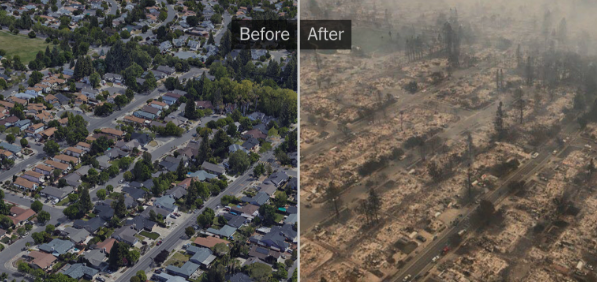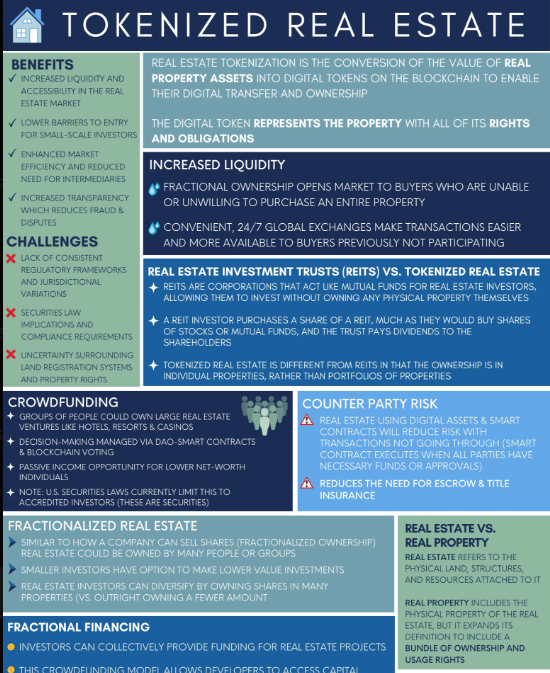Activity
Mon
Wed
Fri
Sun
Oct
Nov
Dec
Jan
Feb
Mar
Apr
May
Jun
Jul
Aug
Sep
What is this?
Less
More
Memberships
BoldTrail Academy
218 members • Free
6 contributions to BoldTrail Academy
Blog Content: The Great Generational Home Shuffle of 2025
The Great Generational Home Shuffle of 2025: What Every Home Seller Needs to Know Let's talk about something fascinating happening in real estate right now. Remember when buying a home was pretty straightforward? You'd list your house, host an open house, and hopefully find a buyer who'd fall in love with your property. Well, 2025 has thrown us quite the curveball, and I'm here to break it down for you. Meet Your New Buyers (They're Not Who You'd Expect) Here's something wild: Millennials and Gen Z aren't just scrolling through TikTok anymore – they're scrolling through home listings. And boy, do they have opinions! These digital natives are reshaping the housing market in ways that would make your head spin. Picture this: A potential buyer walks into your home and instead of checking the water pressure or peeking into closets (though they'll do that too), they're asking about your WiFi speeds and looking for spots to set up their home office/podcast studio/yoga space. Welcome to 2025, folks! What These Young Buyers Actually Want (Spoiler: It's Not Your Grandma's Kitchen) Let me tell you a quick story. Last week, I showed a house to a young couple who literally squealed with joy when they saw the solar panels and smart thermostat. But the perfectly maintained formal dining room? They walked right past it, already planning to convert it into a hydroponic garden room. Times they are a-changin'! These buyers are looking for: - Homes that wouldn't look out of place in a sci-fi movie (hello, smart everything!) - Spaces that can transform faster than a Transformer (office by day, guest room by night) - Green features that would make Mother Nature proud Meanwhile, On the Other Side of the Generation Gap... But wait, there's another plot twist in our story. Remember the Baby Boomers? They're not just sitting in their large family homes anymore. They're on the move, and their wish list might surprise you. Many are saying goodbye to their sprawling suburban homes, but here's the kicker – they're not all heading to traditional retirement communities. Instead, they're looking for "right-sized" homes that combine comfort with convenience. Think single-level living with enough space for the grandkids to visit (but not so much that maintenance becomes a full-time job).

2 likes • Jan 28
Alex great blog: I think you are right on track. You made me think a lot about where we work 55+ communities. The older Sun Cities built in the 1960's to 1989, they will need a lot of update to reach the new retirees. Those now thinking about selling within the next 5 years or so need to contact or think about what the retiree down the road wants in there house. The formal living room and dining room are out. They have always have needed freshening up but now selling in the future, there will be a new form of remodeling not just kitchens and bathrooms, but rooms you have mentioned. Great article.
Blog Content : Community's recovery from wild fire.
Projecting Southern California’s Wildfire Recovery: Lessons from the Camp Fire in Paradise, California As Southern California grapples with the devastating effects of its ongoing wildfires, insights from the recovery of Paradise, California—ravaged by the 2018 Camp Fire—can offer a roadmap for what lies ahead. Paradise’s experience highlights the complexities of rebuilding and adapting in the wake of large-scale disasters, providing valuable lessons for shaping Southern California’s recovery. What We Learned from Paradise’s Recovery The Camp Fire destroyed over 14,000 homes in Paradise and displaced nearly 26,600 residents. Recovery efforts have been slow but steady, with several notable milestones: 1. Rebuilding Progress: Over 2,500 new structures have been built, accounting for roughly 18% of pre-fire housing stock, as of late 2023. 2. Population Recovery: Paradise’s population has rebounded to over 9,000, about one-third of its pre-fire numbers. 3. Wildfire-Resilient Construction: Stricter building codes and wildfire-resistant materials have become standard in the rebuilding process. What This Means for Southern California Southern California’s wildfire recovery is expected to follow a similar trajectory, but the region’s unique characteristics—including its larger population and urban-rural interface—will shape the specifics of the process. 1. Rebuilding Challenges and Timelines - Timelines: Recovery will take years, if not decades. Paradise serves as a benchmark, showing that even with significant resources, rebuilding communities is a slow process. The situation in Southern California is even more dire, given the sheer scale of destruction and the density of affected populations. - Construction Costs: Rising material costs and labor shortages, combined with stricter building codes, will likely make rebuilding expensive. Southern California may face additional delays due to its larger scale of devastation and the dire shortage of skilled labor. 2. Population Displacement and Migration

12 week lead generation series
Join our 12-week BoldTrail Academy series focused on mastering lead generation with kvCORE tools. Each Friday, we’ll cover essential strategies like Smart CRM management, landing pages, squeeze pages, social media integration, text codes, property boosts, email campaigns, market reports, IDX websites, open house apps, smart numbers, and analytics. Designed to maximize leads with minimal costs, this series empowers agents to build and sustain a thriving real estate business. Every Friday at 10am PST zoomwithalexdyer.com https://us02web.zoom.us/j/7886946092?pwd=ejVjNnNRY09xQlcxR05YL0lmdGsvdz09
Ways to add value to the CMA
To provide value to homeowners in an age where online real estate platforms offer instant home valuations, you need to focus on what automated platforms lack—personalization, context, and expertise. Here’s how you can enhance your comparative market analysis (CMA) process: 1. Provide Context and Accuracy - Explain the Limitations of Automated Valuations: Share that online platforms rely on algorithms, which can’t always account for unique property features, recent upgrades, or neighborhood nuances. - Highlight Local Expertise: Use your deep understanding of the local market to explain trends and factors affecting home values in their specific area. - Incorporate Real-Time Data: Leverage tools like MLS to provide data from recent sales and listings that automated platforms might not yet reflect. 2. Customize the CMA - Home-Specific Adjustments: Include insights on the impact of upgrades, curb appeal, and specific property features that differentiate the home. - Neighborhood Comparisons: Compare the home not only to recently sold properties but also to active listings, withdrawn listings, and expired listings in the area. - Market Trends Analysis: Show trends like average days on market, seasonal fluctuations, and buyer demand in their neighborhood. 3. Go Beyond the Numbers - Forecast Market Dynamics: Discuss how factors like interest rates, economic conditions, or local developments might impact their property value. - Provide Scenarios: Offer insights into value differences under scenarios such as selling "as-is" vs. making certain upgrades or repairs. 4. Build Trust Through Transparency - Walk Them Through the Process: Explain how you arrive at the suggested price, making it a collaborative process rather than just presenting numbers. - Highlight Your Role as an Advisor: Position yourself as a guide who can help them navigate pricing, staging, marketing, and timing to maximize value. 5. Offer Additional Value
Blog Content: Invest Smarter: Find Out How Real Estate Tokenization Can Enhance Your Portfolio!
Tokenizing real estate—converting property ownership into digital tokens on a blockchain—is poised to revolutionize the housing market, enhancing accessibility and affordability for both buyers and renters. Key Advantages of Real Estate Tokenization: - Fractional Ownership: Tokenization enables fractional ownership, allowing investors to purchase portions of a property. This lowers the entry barrier, making real estate investment accessible to a broader audience. - Enhanced Liquidity: Traditionally, real estate investments are illiquid, requiring significant time to buy or sell. Tokenized assets can be traded on secondary markets, providing investors with greater flexibility and quicker exit opportunities. - Global Accessibility: By leveraging blockchain technology, tokenized real estate becomes accessible to a global pool of investors, diversifying investment opportunities and increasing market participation. - Efficiency and Transparency: Blockchain's decentralized ledger ensures transparent and secure transactions, reducing the need for intermediaries and lowering transaction costs. Impact on Housing Affordability: - Lower Investment Thresholds: Fractional ownership allows individuals to invest smaller amounts, democratizing access to real estate markets and enabling more people to benefit from property appreciation and rental income. - Community-Driven Development: Tokenization can facilitate community investment in local real estate projects, promoting the development of affordable housing and empowering residents to have a stake in their neighborhoods. - Innovative Funding Models: Real estate tokenization can introduce new funding mechanisms for affordable housing projects, attracting a diverse range of investors and expediting project completion. Challenges and Considerations: While the potential benefits are significant, several challenges must be addressed: - Regulatory Compliance: Navigating the complex legal landscape surrounding securities and real estate transactions is crucial to ensure compliance and protect investors. - Market Adoption: Widespread acceptance of tokenized real estate requires education and trust-building among investors, developers, and regulatory bodies. - Technological Infrastructure: Robust and secure platforms are essential to manage tokenized assets and facilitate transactions effectively.

1-6 of 6
@kevin-wurgler-4430
As full service Sun City West, Sun City, Sun City Grand, Surprise, and Peoria real estate professionals.
Active 176d ago
Joined Oct 2, 2024
Powered by

